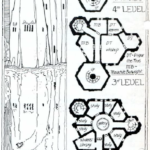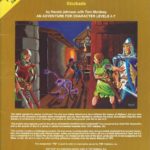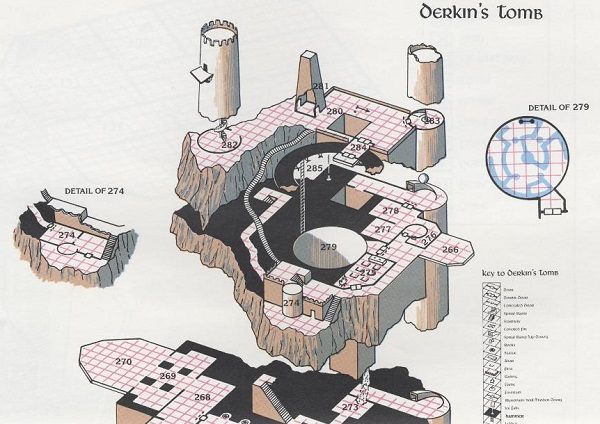One of the most difficult things with maps, particularly in those for roleplaying games, is capturing three-dimensional spaces. Since the early days of computer games like Colossal Cave Adventure and various dungeon delves, the result is the flattening of complex structures onto two-dimensional planes.
My experiences as an early gamer were rather insular and even TSR’s Dwellers of the Forbidden City (I1) passed me by at the time, much like many of the works out of the UK including the Pellinore game setting. As a result, I think my first exposure to isometric maps were the ones from the Dragonlance adventures and those blew my mind.
Over the years, I’ve broadened my horizons considerably. I’ve seen some truly terrible isometric maps that confuse more than they help and some equally sublime flat maps that expertly use symbols and notations to connect spaces. As in many things related to gaming, the key seems to be imagination and a willingness to let the flow of the game supersede the dictates of reality. As a case in point, the upper level of my all-time favorite, The Secret of the Slavers Stockade, is something of a mess if players are allowed to scale the wall into the inner courtyard. This is due in part to the lack of clear definitions on the lines of sight from the populated areas and in showing how unapproachable the central guard tower is meant to be. An isometric view of the complex, paired with the map, would go a long way towards alleviating that. The complexity of the structure’s main level would, I think, preclude turning it into an isometric map.
At some point, in the not-too-distant future, I’ll see if my artistic ability matches my imagination and try my own hand at an isometric map or two of my own.



